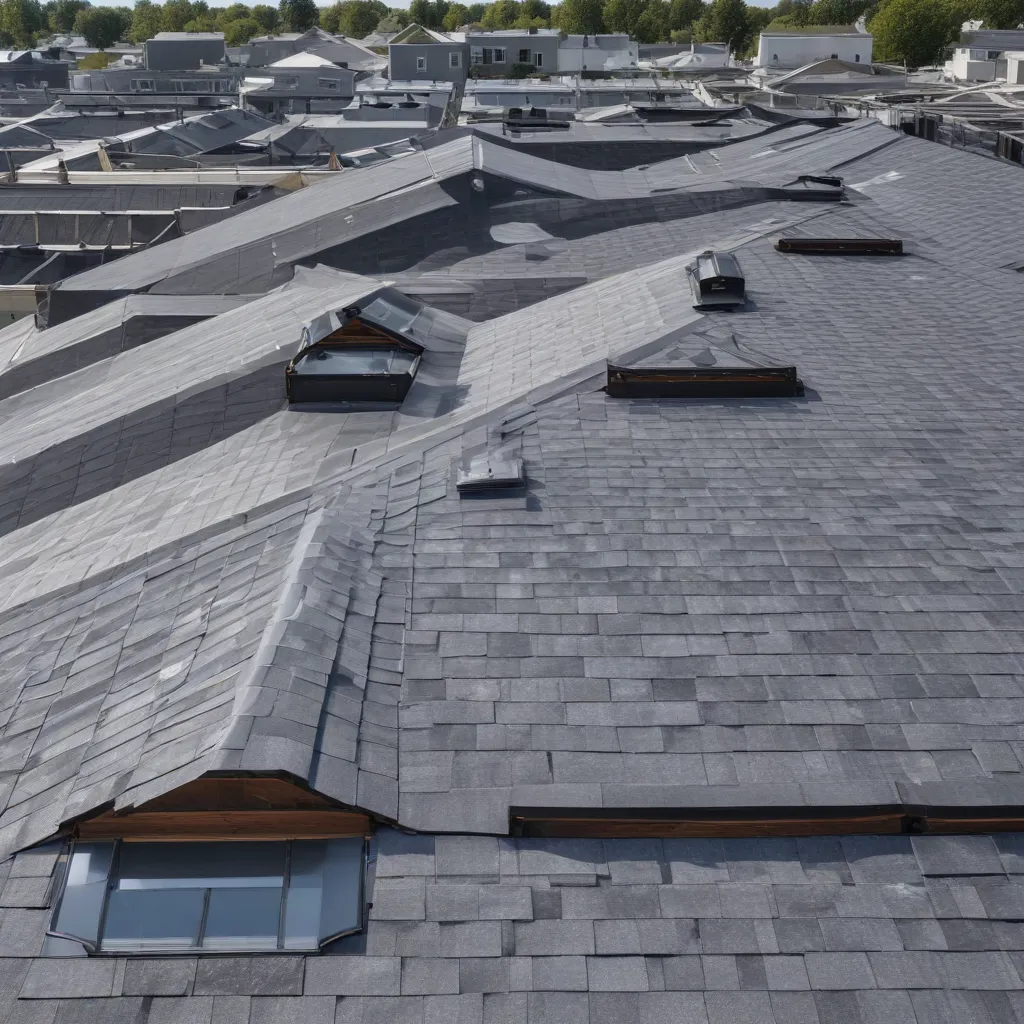
As an experienced roofing specialist, I’ve witnessed firsthand the immense impact that roof design can have on a building’s energy efficiency. Whether you’re constructing a new home or renovating an existing structure, thoughtful roof planning is crucial to maximizing energy savings and reducing environmental impact. In this comprehensive article, we’ll explore how various roof characteristics, passive solar strategies, and active energy-efficient technologies can work in harmony to create truly optimized, high-performance roofing systems.
Roof Characteristics that Influence Energy Efficiency
The fundamental elements of roof design – geometry, materials, and orientation – play a vital role in determining a building’s energy performance. Understanding how these factors interact can help you make informed decisions that enhance thermal comfort and minimize utility costs.
Roof Geometry: The shape and slope of a roof can significantly affect its ability to manage solar heat gain and facilitate natural ventilation. Pitched roofs, for instance, allow for better air circulation and can be designed to maximize passive solar heating in the winter and shading in the summer. Conversely, flat or low-sloped roofs may be more prone to heat absorption, requiring additional insulation or cooling strategies.
Roof Materials: The specific roofing materials you choose can dramatically impact a building’s thermal properties. Tile, metal, and composite shingles each offer unique advantages in terms of reflectivity, thermal mass, and insulation value. Carefully evaluating the trade-offs between these characteristics can lead to significant energy savings.
Roof Orientation: The direction a roof faces relative to the sun’s path plays a crucial role in passive solar design. Strategically positioning the roof to maximize south-facing exposure can harness the sun’s energy for natural heating, while east- or west-facing orientations may require more shading to prevent unwanted heat gain.
Thermal Properties of Roofs and Their Impact
Delving deeper into the science of roofing, we can examine the specific thermal characteristics that influence a building’s energy efficiency. These include insulation, reflectivity, and thermal mass.
Insulation: Proper insulation is the foundation of an energy-efficient roof system. By reducing heat transfer through the roof, insulation helps maintain desired indoor temperatures, reducing the need for active heating and cooling. The type, thickness, and placement of insulation can significantly impact its effectiveness.
Reflectivity: The ability of a roof surface to reflect sunlight, known as solar reflectance, is a crucial factor in managing heat gain. Cool roofs, which utilize highly reflective materials, can significantly reduce cooling loads by minimizing the amount of solar radiation absorbed by the building.
Thermal Mass: The capacity of a material to store and release heat, or its thermal mass, can also contribute to energy efficiency. Roofing materials with high thermal mass, such as tile or concrete, can help regulate indoor temperatures by absorbing and gradually releasing heat, reducing the need for active climate control.
Passive Solar Design Strategies for Roofs
Passive solar design harnesses the sun’s energy without the use of mechanical systems, leveraging the interplay between roof design, window placement, and natural ventilation to optimize energy efficiency.
Solar Orientation: Proper orientation of the building and its roof is essential for passive solar strategies to be effective. Positioning the roof to maximize south-facing exposure can enhance the capture of solar energy during the winter, while strategic placement of windows can facilitate natural lighting and heat gain.
Ventilation and Shading: Effective roof design also incorporates natural ventilation and shading mechanisms to manage heat during the warmer months. Strategically placed vents, ridge vents, and eave vents can promote airflow, while overhangs, awnings, and vegetation can provide crucial shading.
Thermal Regulation: By thoughtfully combining insulation, reflectivity, and thermal mass, roofs can actively regulate the flow of heat, keeping buildings comfortable year-round. This “thermal regulation” minimizes the need for energy-intensive heating and cooling systems, resulting in significant long-term savings.
Active Energy-Efficient Roof Technologies
While passive solar design principles are foundational, modern roofing systems also incorporate active technologies to further enhance energy efficiency. These include rooftop solar systems, roof-integrated systems, and energy-efficient roof coatings.
Rooftop Solar Systems: The installation of photovoltaic (PV) panels or solar thermal collectors on the roof can transform a building’s energy profile, generating renewable electricity or hot water to displace the need for grid-supplied power. Integrating these systems into the roof design can optimize both energy production and aesthetic appeal.
Roof-integrated Systems: Innovative roof technologies, such as green roofs and cool roofs, offer additional opportunities for energy savings. Green roofs, which feature a layer of vegetation, can improve insulation, reduce heat island effects, and promote natural stormwater management. Cool roofs, with their highly reflective surfaces, can dramatically lower cooling loads.
Energy-efficient Roof Coatings: Specialized roof coatings can further enhance a building’s thermal performance. Reflective coatings minimize solar heat gain, while insulative coatings enhance the roof’s ability to retain heat, reducing the need for active heating and cooling.
Environmental and Economic Considerations
Optimizing energy efficiency through roof design offers profound environmental and economic benefits that extend far beyond the individual building.
Sustainability Impacts: By reducing a building’s energy consumption, energy-efficient roofing systems contribute to broader sustainability goals, such as decreased greenhouse gas emissions and increased renewable energy generation. This aligns with the growing demand for eco-conscious construction and renovation practices.
Cost-benefit Analysis: While the initial investment in energy-efficient roof upgrades may be higher, the long-term savings on utility bills can provide a significant return on investment. Factoring in the reduced environmental impact and potential government incentives or rebates can further strengthen the financial case for energy-efficient roof design.
Ultimately, the path to optimizing energy efficiency through roof design is a multi-faceted endeavor that requires a holistic understanding of roof characteristics, passive solar strategies, and active technologies. By embracing this comprehensive approach, you can create high-performance roofing systems that not only enhance the comfort and sustainability of a building but also contribute to the broader mission of building a more energy-efficient future. For more information on genuine roofing solutions, please visit https://www.genuineroofsystems.com.

























